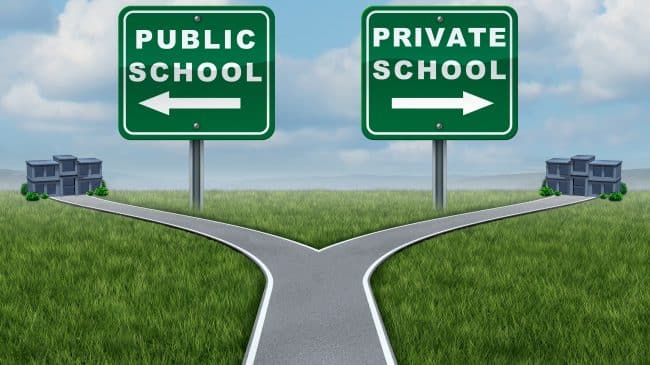Warren and her daughter, Amelia, offered support for a limited form of public-school choice in their 2003 book, “The Two-Income Trap.” But her campaign insists that “Elizabeth Warren never supported private-school vouchers.”
Warren reiterated this position in September’s Democratic presidential debate when she said, “Money for public schools should stay in public schools, not go anywhere else.”
It is anything but “progressive” to limit educational options for the least-advantaged students in the U.S. Yet it’s the peak of hypocrisy to exercise school choice for your own kids while fighting to prevent other families from doing the same.
One of Warren’s main talking points on education is that she attended traditional public schools as a child. But that decision was likely more her parents’ than hers. The more relevant question is where she chose to send her own kids.
Until now, no one has been able to answer that question. Although Education Week tried, writers Alyson Klein and Maya Riser-Kositsky reported that Warren’s campaign “did not respond to inquiries about where she sent her children.” I e-mailed the Warren campaign the same question and similarly didn’t receive a response (*Ed. Note: See update below).
Why the mystery? Warren regularly reminds us that she attended and taught at public schools. She brags that she is “#PublicSchoolProud.” Yet not proud enough, it seems, to stop her from exercising school choice by sending her kid to an expensive private school.
There was little information regarding her children’s K-12 educations on the Internet. But using her son Alex Warren’s full name and birth year (1976), I searched for school yearbooks on the premium version of Ancestry.com and found one record from 1987. The fifth-grade yearbook picture indeed appears to be Warren’s son, matching family photos online.
The record was from Kirby Hall School, a private school only a half-mile from the University of Texas at Austin, where Warren taught. It’s not clear if Alex attended Kirby or any other private school during any other year, but if Warren was willing to pay the cost, she certainly had the option.
Kirby’s current tuition is $17,875 per year. The school also boasts a student-teacher ratio of only 5 to 1; that ratio in public schools is three times as high. And every one of Kirby’s graduates goes to college.
People who can afford it also exercise choice by moving to communities with good public schools, as Warren appears to have done. A similar search for her daughter turned up just one record, which showed Amelia attended Anderson High School, which is not a private school, in 1987. US News and World Report ranks Anderson among the top high schools in the country.
Warren’s family’s educational situation is vivid proof of the need for school choice. In the same year, one child went to private school, the other went to public school. One size does not fit all.
I don’t blame Alex Warren one bit for attending private school when he was a child or Sen. Warren for sending him there. I’m happy for him and happy Warren had that option. But it’s beyond hypocritical for the senator to try to deny less advantaged families educational choice after exercising it for her own kid.
*Nov. 22 Update:
“Confronted by a school-choice activist Sen. Elizabeth Warren (D., Mass.) denied sending one of her children to a private school, though her presidential campaign later told the Free Beacon that her son, Alex Warren, did in fact attend private school,” the Washington Free Beacon reported on Nov. 22.
“Elizabeth’s daughter went to public school. Her son went to public school until 5th grade,” Warren communications director Kristen Orthman told the Washington Free Beacon on Nov. 22. “Elizabeth wants every kid to get a great education regardless of where they live, which is why her plan makes a historic investment in our public schools. Every public school should be a great school. Her plan does not affect funding for existing non-profit charter schools, but she believes we should not put public dollars behind a further expansion of charters until they are subject to the same accountability requirements as public schools.”
A version of this column first appeared in the New York Post.

